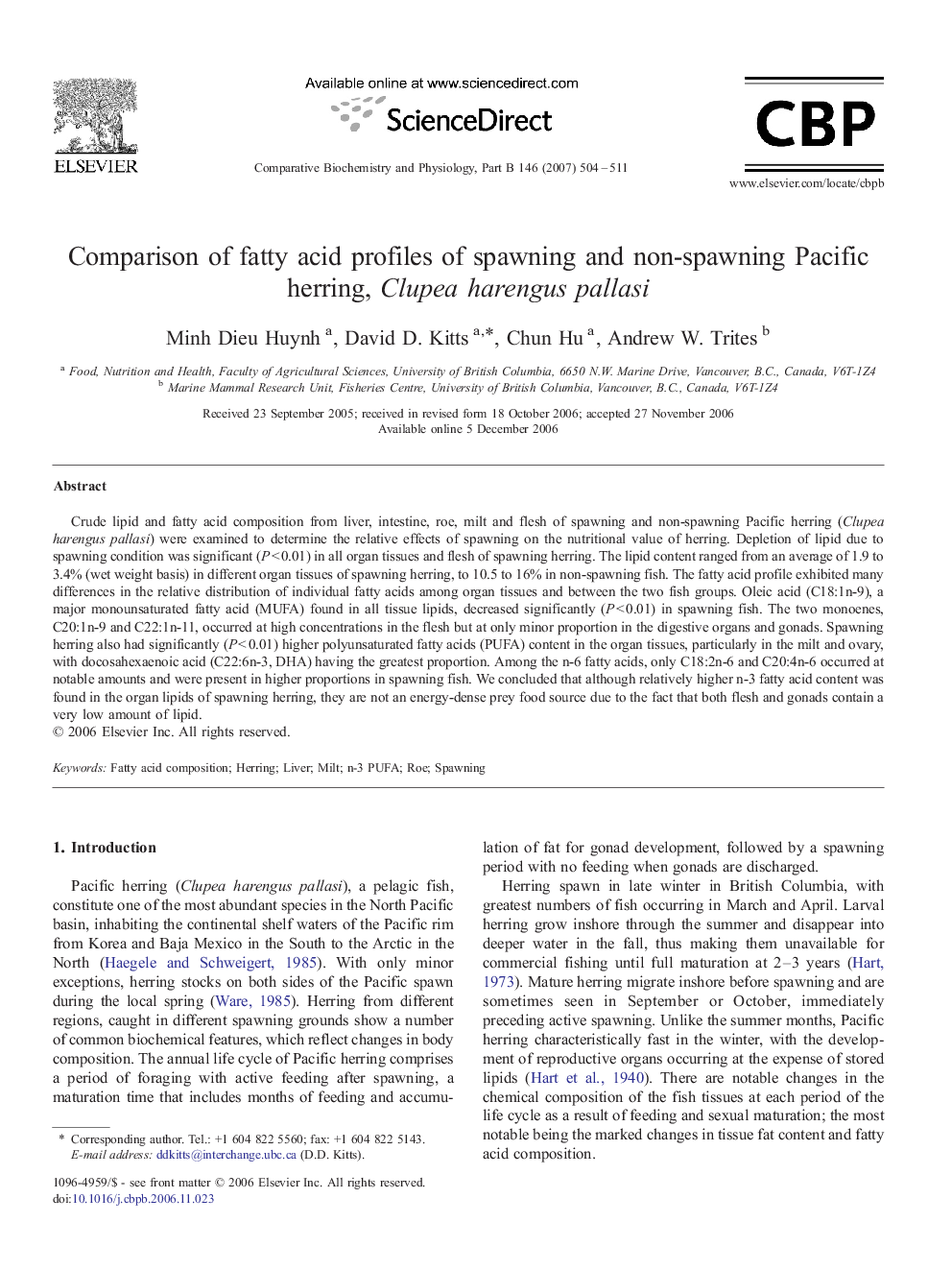| Article ID | Journal | Published Year | Pages | File Type |
|---|---|---|---|---|
| 1976463 | Comparative Biochemistry and Physiology Part B: Biochemistry and Molecular Biology | 2007 | 8 Pages |
Crude lipid and fatty acid composition from liver, intestine, roe, milt and flesh of spawning and non-spawning Pacific herring (Clupea harengus pallasi) were examined to determine the relative effects of spawning on the nutritional value of herring. Depletion of lipid due to spawning condition was significant (P < 0.01) in all organ tissues and flesh of spawning herring. The lipid content ranged from an average of 1.9 to 3.4% (wet weight basis) in different organ tissues of spawning herring, to 10.5 to 16% in non-spawning fish. The fatty acid profile exhibited many differences in the relative distribution of individual fatty acids among organ tissues and between the two fish groups. Oleic acid (C18:1n-9), a major monounsaturated fatty acid (MUFA) found in all tissue lipids, decreased significantly (P < 0.01) in spawning fish. The two monoenes, C20:1n-9 and C22:1n-11, occurred at high concentrations in the flesh but at only minor proportion in the digestive organs and gonads. Spawning herring also had significantly (P < 0.01) higher polyunsaturated fatty acids (PUFA) content in the organ tissues, particularly in the milt and ovary, with docosahexaenoic acid (C22:6n-3, DHA) having the greatest proportion. Among the n-6 fatty acids, only C18:2n-6 and C20:4n-6 occurred at notable amounts and were present in higher proportions in spawning fish. We concluded that although relatively higher n-3 fatty acid content was found in the organ lipids of spawning herring, they are not an energy-dense prey food source due to the fact that both flesh and gonads contain a very low amount of lipid.
